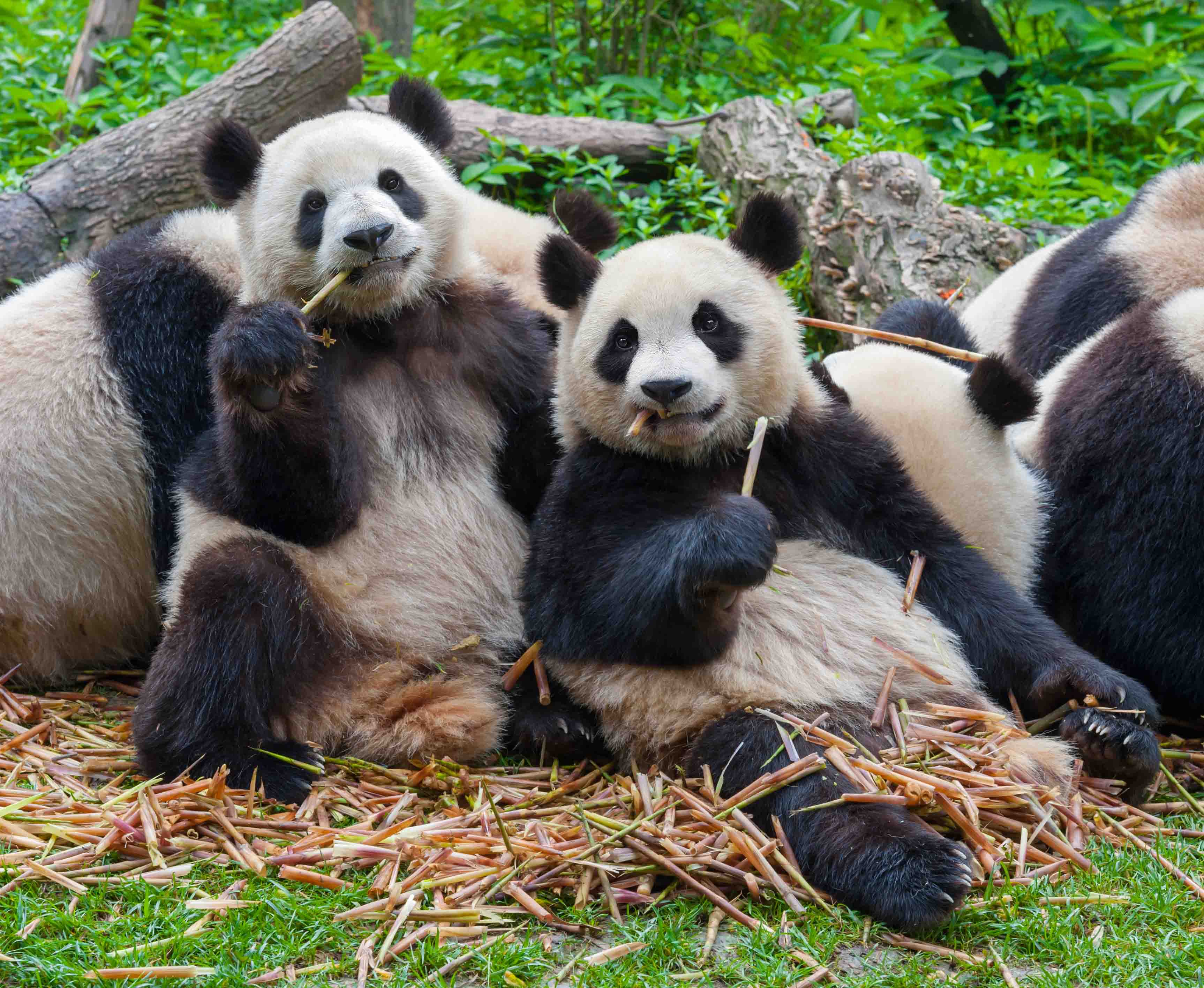
Wildlife in China is very diverse; there are over 30,000 kinds of plants
and over 4,400 species of vertebrates. Because of China's immense range
of climates and landscape, there are many different kinds of habitats
which support many different kinds of flora and fauna. The Giant Panda
is China's most loved animal. China's natural world has been since
ancient times a source of inspiration in the arts, literature, religion
and mythology. Philosophers have preached the virtues of living in
harmony with nature for centuries. Unfortunately, the rapid economic
development and rate of urbanization in China have led to increased
deterioration of the environment and loss of habitat for many of the
species endemic to China. Many of them are currently listed as
endangered, and none more well-known than the Giant Panda. Some are in
danger or vulnerable to extinction, and some have special significance
in Chinese Culture.
Animals in China
Giant Panda
The Giant Panda roams the forests and mountains of South West China. An
endangered species, many reserves have been set up for the conservation
of this animal unique to China and considered a national treasure.
Siberian Tiger
This is China's top predator, also known as the Amur Tiger for its
homeland region, the temperate snow-covered mountains in north-east
China. Also an endangered species due to excessive poaching.
Golden Monkey
Mainly tree-dwelling in the cold mountainous forests of central and
Southwest China. Threatened by deforestation, this is also an endangered
species and under state protection. Along with Pandas, considered
national treasures.
Red Panda
Native of China, this small arboreal mammal is found in the mountainous
forests of Sichuan and Yunnan provinces. No longer categorized as
endangered but still vulnerable.
Chinese Alligator
Similar to the American alligators but much smaller and completely
armored, inclusive belly. Its critically endangered population of
perhaps a couple of hundred lives along the ponds and wetlands of the
lower Yangtze River.
Red-crowned Crane
Found in the marshes and riverbanks of East and East-Central China, this
is one of the largest of cranes easily recognizable for its red patch
on the head. Cranes have been for long a symbol of longevity in China.
Baiji
Known as the Yangtze River Dolphin is a fresh water dolphin only found
in the Yangtze River. Sadly it has been categorized as critically
endangered and possibly extinct, since a 2006 expedition failed to find
any of the species in the river.
Pink Dolphin
Also known as the Chinese White Dolphin, is mainly found around the
waters of Hong Kong and the Pearl River Delta. They are endangered and
became the official mascot of Hong Kong's handover to China.
Chinese Sturgeon
Also a national treasure and a "living fossil". These creatures have
existed from prehistoric times, and have managed so far to defy
extinction but are critically endangered. They are only found in the
waters of the Yangtze River.
Bactrian Camel
It is found accross the dry deserts in Northern China. They have been
domesticated and are used to provide transport accross the vast areas.
Tibetan Antelope
A native from the Tibetan Plateau, it prefers flat, open terrain, with sparse vegetation cover.
Yak
The hardy yak is native to the high plains of the Himalayas and
essential for Tibetans subsistence. Used in transportation as well as
for its meat, milk and even hair.
Chinese Pheasant
Also known as the Golden Pheasant, is mainly native to forests in
mountainous areas of western China, also commonly found in zoos. The
Pheasant is for Chinese a symbol of good fortune and beauty.
Wildlife in China: China Plants
If the animal life diversity in China is great, its plant life is
certainly profuse and one of the richest and most diverse in the world.
Just about everything grows in China due to the wide range in
temperatures from sub-zero frigid climate to hot, humid and tropical.
Instead of giving you figures and lots of names that probably don't mean
much to you, here is a selection of some interesting facts about
China's native plants and vegetation.
Bamboo
Most Chinese have lucky bamboo plants in their homes right? Bamboo of
course grows everywhere in the world but is thought to have originated
in China. Bamboo has traditionally had many uses, in construction, as
decoration and food for example.
Ginseng
It is quite popular for its medicinal qualities, the part that is used is the root.
Flowers in China are appreciated beyond their beauty, some have special meanings:
The Peony is considered China's national flower, is treasured as the
"color of the nation and the scent of heaven" and often associated with
nobility and peace.
The Lotus flower has a special meaning in Buddhism, the Lord Buddha is
often depicted sitting on a throne of Lotus. The Lotus means purity and
is a symbol of spiritual growth.
Plum Blossoms have been a favourite subject of Chinese painters through
the ages. Plum blossoms are a symbol of strength and resilience, as the
plant braves the winter and blooms before any other plant, it is
regarded as the symbol of rebirth and growth.